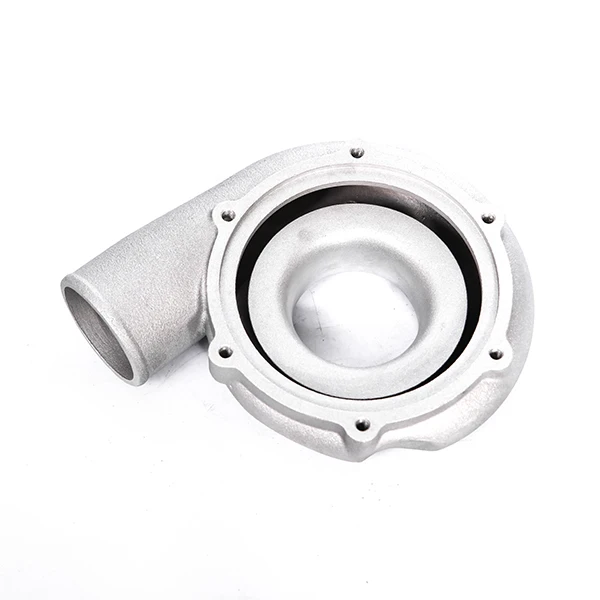Mobile:+86-311-808-126-83
Email:info@ydcastings.com
Building Your Own Aluminum Foundry at Home for Creative Metal Casting
Homemade Aluminum Foundry A Step-by-Step Guide
Creating a homemade aluminum foundry can be a rewarding project for metalworking enthusiasts and hobbyists. The process allows for the recycling of aluminum scrap into usable ingots, which can then be cast into various shapes and objects. This guide will walk you through the steps of designing and constructing your foundry, along with safety tips and techniques to ensure a successful casting experience.
Understanding the Basics
An aluminum foundry consists of a furnace where aluminum is melted, and a casting area where molten metal is poured into molds. The primary materials required include a furnace, crucible, and molds. Additionally, you will need protective gear, such as gloves, goggles, and a face shield, to safeguard against heat and molten metal splashes.
Materials and Tools
Before you start building your foundry, gather the necessary materials and tools
1. Furnace - You can build a simple furnace using fire bricks or ceramic fiber insulation and a metal container (such as a propane tank) for structure. - Alternatively, a purchased propane or electric furnace designed for metal casting also works well.
2. Crucible - The crucible is where you will melt the aluminum. It can be made from materials compatible with high temperatures, like graphite or silicon carbide.
3. Insulation - Insulating materials, such as kaowool or furnace cement, help retain heat in the furnace, making the melting process more efficient.
4. Molds - Molds can be made from sand, metal, or ceramic materials. Sand casting is popular due to its simplicity, and you can make your molds using a pattern.
5. Tools - A propane torch or heat source, tongs, a shovel, and a ladle will be necessary for handling the hot materials.
Building the Furnace
1. Design Your Furnace - Determine the size of the furnace based on the quantity of aluminum you plan to melt. A simple design involves a cylindrical shape that stands around 3 feet tall with a diameter of about 2 feet. 2. Constructing the Furnace - Use fire bricks to create the walls of the furnace. Ensure to leave a hole for venting the exhaust gases. The top should be removable to allow for easy access when loading the crucible.
3. Insulation - Line the interior with insulating material to minimize heat loss. If you're using a metal container, coat the inside with a layer of furnace cement for added insulation.
homemade aluminum foundry

4. Install a Burner - If using propane, install a burner that will feed into your furnace. Make sure it’s positioned to circulate heat effectively within the chamber.
Melting Aluminum
1. Preparing Aluminum - Collect aluminum scrap (old cans, parts, or any clean aluminum). Clean off any non-aluminum materials before melting to prevent contamination.
2. Lighting the Furnace - Start your propane or electric furnace according to the manufacturer’s instructions. Allow it to heat up for around 30 to 45 minutes until it reaches the melting temperature of aluminum (around 660°C or 1220°F).
3. Adding Aluminum to the Crucible - Carefully place the aluminum scrap into the crucible once the furnace is at the desired temperature. Use your tongs or ladle to avoid burns.
4. Melting Process - Watch the aluminum as it turns from solid to molten. Stir occasionally with a metal rod to encourage even melting.
Pouring and Molding
1. Preparing Molds - While the aluminum melts, prepare your molds. Ensure they are dry and free of any contaminants to achieve the best results.
2. Pouring the Aluminum - With the molten aluminum ready, use the ladle to carefully pour it into the molds. Pour slowly to prevent splashing and ensure even distribution.
3. Cooling - Let the aluminum cool and solidify in the molds. This process can take anywhere from a few minutes to hours depending on the thickness of the casts.
Safety Considerations
Remember, safety should always be your top priority when working with molten metals. Always wear appropriate protective gear, work in a well-ventilated area, and be cautious of the high temperatures involved. Keep a fire extinguisher nearby, and never leave your foundry unattended.
Conclusion
Building a homemade aluminum foundry requires careful planning and execution, but it can lead to exciting projects and a deeper understanding of metalworking. Whether you are creating art, repairing equipment, or crafting useful items, the satisfaction of producing your aluminum casts is immense. With proper safety measures and techniques, your journey into metal casting can be both productive and enjoyable. Happy casting!
-
Understanding Metal Casting TechniquesNewsApr.02,2025
-
Understanding Exhaust Manifolds for Enhanced Engine PerformanceNewsApr.02,2025
-
The World of Metal FabricationNewsApr.02,2025
-
Key Components for Pump and Turbo EfficiencyNewsApr.02,2025
-
Essential Tools for Automotive Maintenance and RepairNewsApr.02,2025
-
Durable Valve Components for Effective Water ManagementNewsApr.02,2025











